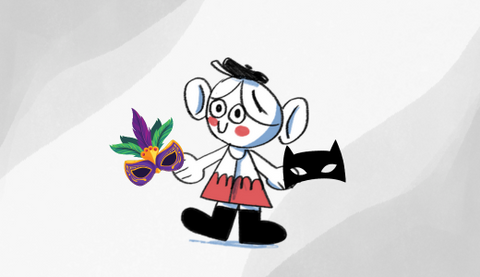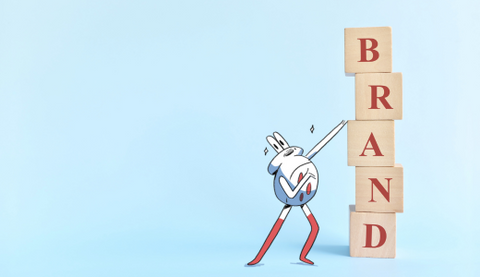Have you ever walked out of a store clutching something you didn’t plan to buy, wondering “How did that happen?”.
It was probably all down to a story.
And it wasn’t necessarily the brand that told you that pivotal story. It was your own brain, manipulating your actions. A betrayal!
You see, purchasing something shiny and new gives us a big dopamine hit, and our brains love dopamine.
We respond so favourably to stories that we tell them to ourselves without even realising it:
“This planner will be the one that changes everything. I’ll use it every day until I get that promotion. People will wonder what my secret is!”
Or:
“I’ll have time to sit, feet up, on the couch and get lost in a book while this robo-hoover cleans the floors for me.”
You see, you aren’t buying the planner or the hoover. You’re buying a feel-good story that leads to career success, or more free time.
A great story isn’t just information; it’s transformation. It builds emotional connections, simplifies complex ideas, and makes the abstract relatable.
How can you persuade people to tell themselves stories about your product?
The same brain hack that makes you buy a planner can be your secret weapon for selling your own product.
How? Well, your brand can set the stage for a story.
Here’s the magic part: your audience’s brain will complete the story for you. When you craft a compelling narrative, the customer instinctively places themselves at the center. Suddenly, your product becomes the hero of their personal story. Or better yet, it turns them into the hero.
For example:
- A luxury watch isn’t selling timekeeping. In fact, it’s almost imperceptibly better at telling the time than a cheap alternative; it’s selling the story of sophistication, success and identity.
- A cleaning service isn’t selling tidiness; it’s selling the relief of walking into a home that feels like a sanctuary.
- A fitness app isn’t selling workouts; it’s selling the story of becoming their strongest self.
Your job? Provide the framework, and let their brain take over. Here’s how.
1. Hook them with emotion
Start by connecting to something your audience already cares about. Ask yourself:
What problem are they struggling with?
What feeling do they want more of?
For example: if you sell a productivity tool, don’t just talk about saving time. Instead, open with the emotional relief of finally completing a to-do list.
Use emotional hooks like frustration, relief, hope or pride to draw them in.
2. Make the customer the hero
Your customer doesn’t care about your brand’s story as much as they care about their own. Position your product or service as the guide that helps them achieve their goals.
Think about it like this: you’re Yoda, not Luke Skywalker. You’re the magic wand, not Harry Potter.
Ask yourself:
- What journey is my customer on?
Where do they want to go?
How can I guide them there?
3. Tap into universal themes
The best stories resonate because they’re built on timeless, universal themes:
- Transformation: “Here’s how this product will change your life.”
Belonging: “People like you choose this.”
Overcoming challenges: “We help you solve this tricky problem.”
Use storytelling structures like ‘rags to riches’ or ‘man in a hole’ (where the customer struggles and triumphs) to craft your narrative.
4. Show, don’t tell
Customers don’t just want to hear your story – they want to see it. Use vivid imagery and real-world examples to make your story come alive.
Instead of saying, “Our app saves you time,” try:
“Imagine reaching the weekend and realising you already completed all your chores after work. You’re now free to devote yourself to your hobbies or family for two whole days.”
That’s a mental movie your customer can’t ignore.
If you don’t know where to start, use the word ‘Imagine’ at the beginning of a sentence, like in the example above. It’s a mental shortcut that gets you writing a story to finish the sentence.
5. Add social proof
What’s more powerful than any story you can tell about yourself?
The story your customers tell about you.
First, you need to give customers the ability to share their stories. This might mean having a social media presence, adding a feedback function to your app or encouraging people to write reviews.
Once you have that in place, look for snippets of stories in the comments you receive (customer support requests can be a good place for this, too).
Pay close attention to comments that use all uppercase letters, or have emojis or exclamation marks. These signal strong feelings, which often come with stories.
Share these stories in your marketing. If it’s not appropriate to share them as direct quotes, use them to inspire the stories you write yourself.
6. Finish with a call to action
Every good story has an ending. Once you’ve inspired your customer with the narrative, show them the next step. Make it clear, easy, and exciting:
- “Start your transformation today.”
- “Become part of the community.”
- “Take the first step toward [their desired outcome].”
Selling with stories isn’t about spinning tall tales or manipulating your audience. It’s about connecting with them on a deeper level – showing them how your product or service fits into the story they’re already living.
When done well, storytelling doesn’t just sell products; it builds trust, creates loyalty and turns customers into fans.
So, what story are you going to tell about your business?









